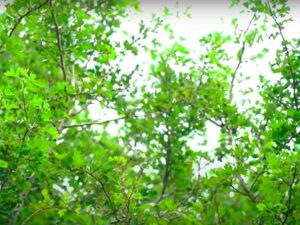The European Union has agreed to a law to expand its forests, marshes and other “sinks” that absorb carbon dioxide (CO2), a measure that could allow the bloc to raise its target for cutting net emissions of greenhouse gases.
Negotiators of the European Parliament and the European Council, which represents EU governments, agreed to a deal on the legislation called the Land Use, Land-Use Change and Forestry (LULUCF) Regulation early this morning.
The law sets a target of removing 310 million tonnes of CO2 equivalent by 2030 through the use of soil, trees, plants, biomass and timber.
Binding targets are to be set for all 27 EU members, aimed at progressively increasing absorptions and reducing emissions so that the EU-wide objective is reached.
Currently, EU countries have to ensure they compensate emissions from land use and forestry with at least an equivalent amount of carbon removal. Under the new law, from 2026 removals of CO2 need to exceed emissions.
The law could lead the EU to increase its target for reducing net greenhouse emissions to nearly 57% by 2030 from 1990 levels, compared with the current 55%, while putting it on course to achieve climate neutrality by 2050.
The deal is last of three the European Union was hoping to clinch in time for a UN climate summit that started in Egypt on Sunday.
The bloc struck a deal last month on a law effectively banning the sale of new petrol and diesel cars from 2035 and on Tuesday agreed to a law that sets national targets to reduce carbon emissions.
Increased carbon capture can take the form of recreating old forests or generating new ones, rewetting peatland or changing farming practices such as reduced tilling or planting longer-rooted crops to trap more carbon in the soil.
EU governments had sought to make the system more flexible but faced opposition from MEPs who said the bloc had already lost about a quarter of its carbon sink in the past 20 years and that the law required guarantees both on carbon sink targets and biodiversity.


